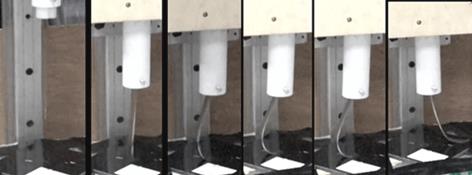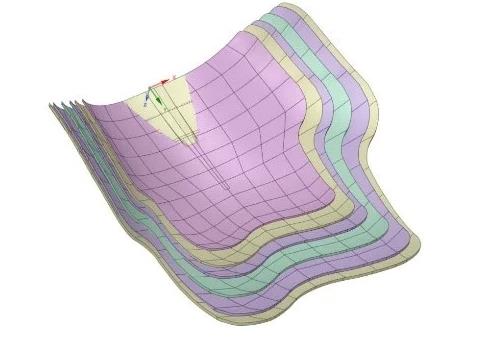- info@bola.world
- Customer Support :0086 (0553)-5628 068
- SUBSCRIBE
How do you develop a new lightweight panel that will absorb impact energy and protect users while controlling cost?

The body armour that is widely worn on our streets to protect wearers against attacks from weapons is designed to be knife proof. However, improvised spikes are an emerging threat that is increasingly being seen on the streets. A company specialising in defence apparel approached Far-UK Ltd with the challenge of developing a body panel that would offer protection against this extra threat.
The additional capability was targeted to achieve the necessary regulatory standards of USA, Europe and UK for knife and spike protection as well as providing substantial blunt force trauma protection. In addition to the performance requirements, the customer needed the new design to be lighter and thinner than the existing polycarbonate panel whilst achieving an equivalent price point.
Satisfying the combination of requirements created a significant manufacturing challenge; increasing the thickness of the existing design may improve spike protection but would increase the weight and cost of the panel, and the extra thickness would decrease the comfort as well as reduce mobility for the wearer. Using an alternative material that offers better impact protection than polycarbonate is another option but must satisfy the light-weighting and cost conditions. Composites like carbon fibre are often exploited for their combination of mechanical performance properties and light weight, but typically composites are more expensive than polycarbonate and could significantly increase production costs.
So how do you develop a new body panel that will absorb impact energy and protect users against spike and knife attack while still controlling cost and without increasing the weight? The answer is that we developed a new composite material and also modified the design of the body panel. Here is how we did it…
IN-HOUSE SPIKE TESTING
Before we could develop a new material, we needed to establish a procedure that would allow us to optimise the impact performance by assessing a series of test samples. Using our in-house drop tower rig we were capable of producing impact at defined energy levels and therefore we could replicate the regulatory spike and knife tests. High-speed photography was also used as a qualitive assessment tool to probe the effects of knives and spikes impacting the test surface.

COMPOSITE MATERIAL DESIGN
We made over 100 test pieces comprising varying designs of new hybrid materials to determine the optimum design of the material. At the conclusion of the testing we had a lay-up that could defeat the spike and knife attacks. During this process we captured high speed footage of a knife blade bending on impact with the laminate.
LAMINATE PANEL DESIGN

Once the laminate was established it was then possible to move to the design phase. Far-UK used specialist software to design front and rear panels in a range of customised sizes from Small to XXXL.
TOOLING FOR MANUFACTURE
Our production engineers designed a practical tooling solution for volume manufacture that met both the customer’s cost and takt time requirements. The resulting production cell was based on a single piece workflow design to ensure that all parts were manufactured to a high level of consistency.
QUALITY CONTROL AND VALIDATION
In addition to the design of the parts and the tooling, the team also developed the process controls to assure the final quality of the product. These process controls were developed using best practice design and production automotive standards (DFMEA and PFMEA) which then gave rise to the process control plans and standard operations to be used in manufacture. Far-UK then produced and submitted samples for accreditation to the international standards required by the customer.
THE RESULT
Far-UK has developed and manufactured a range of sizes of front and rear panels ready for our customer to include in their portfolio of body armour products. The panels are lighter than the polycarbonate technology that they have replaced, exceeding the design brief. They are cost comparable and meet the additional requirement of being spike proof as well as knife proof.

The customer was so confident in the quality and capabilities of the new technology that they launched it at a defence equipment exhibition with a dramatic live stage show. To demonstrate the product, the customer’s MD stood wearing the product while attacked with a knife, then a spike, then a machete and finally a baseball bat!
By transferring design and manufacturing techniques from automotive product development, Far-UK has provided a new approach to developing low cost, lightweight body armour for defence against spike and knife attacks. We are proud to have developed a product that has created a new level of protection for police, security guards and prison officers.